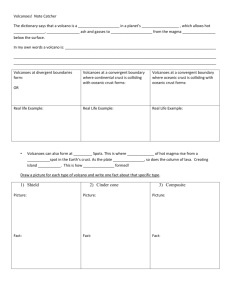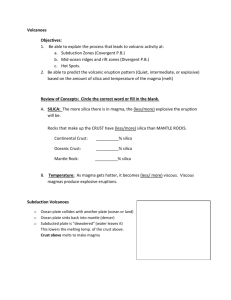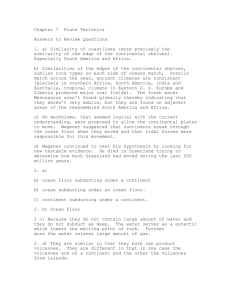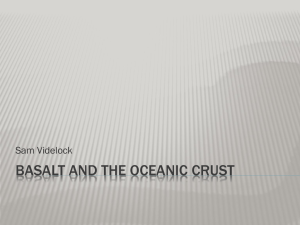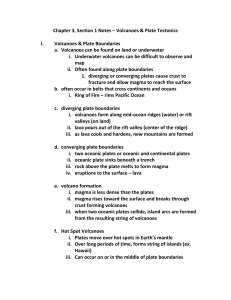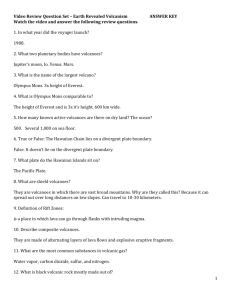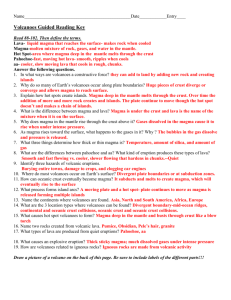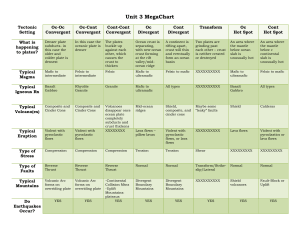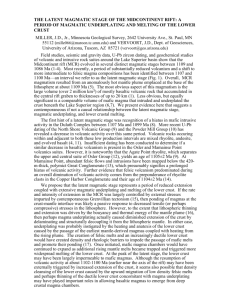File
advertisement
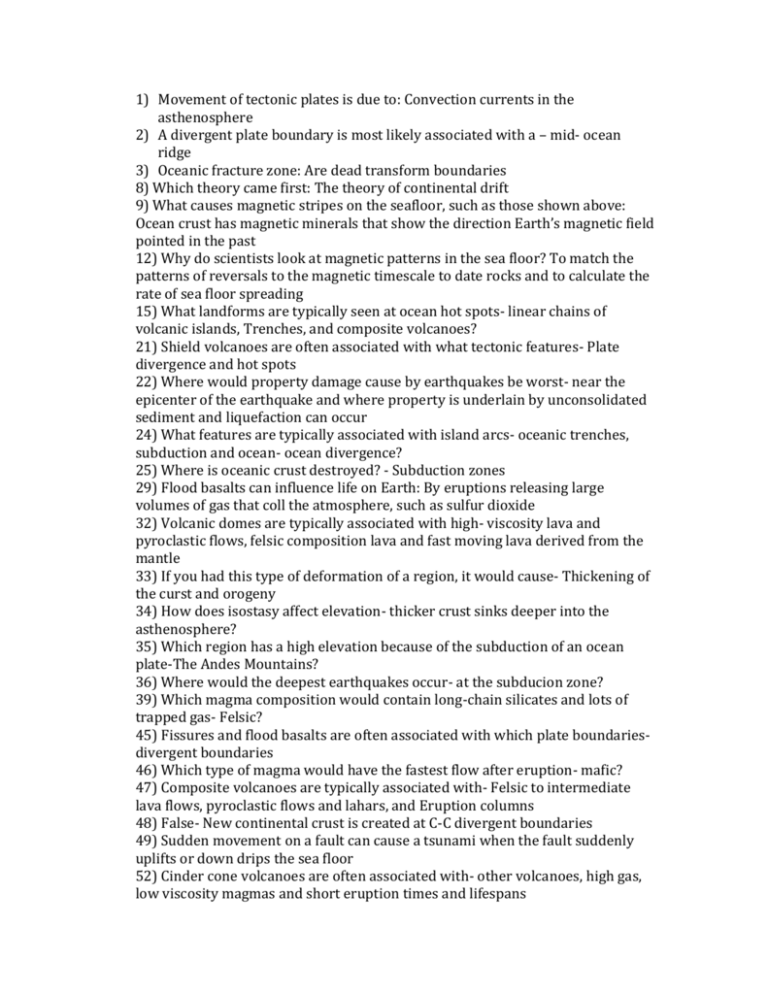
1) Movement of tectonic plates is due to: Convection currents in the asthenosphere 2) A divergent plate boundary is most likely associated with a – mid- ocean ridge 3) Oceanic fracture zone: Are dead transform boundaries 8) Which theory came first: The theory of continental drift 9) What causes magnetic stripes on the seafloor, such as those shown above: Ocean crust has magnetic minerals that show the direction Earth’s magnetic field pointed in the past 12) Why do scientists look at magnetic patterns in the sea floor? To match the patterns of reversals to the magnetic timescale to date rocks and to calculate the rate of sea floor spreading 15) What landforms are typically seen at ocean hot spots- linear chains of volcanic islands, Trenches, and composite volcanoes? 21) Shield volcanoes are often associated with what tectonic features- Plate divergence and hot spots 22) Where would property damage cause by earthquakes be worst- near the epicenter of the earthquake and where property is underlain by unconsolidated sediment and liquefaction can occur 24) What features are typically associated with island arcs- oceanic trenches, subduction and ocean- ocean divergence? 25) Where is oceanic crust destroyed? - Subduction zones 29) Flood basalts can influence life on Earth: By eruptions releasing large volumes of gas that coll the atmosphere, such as sulfur dioxide 32) Volcanic domes are typically associated with high- viscosity lava and pyroclastic flows, felsic composition lava and fast moving lava derived from the mantle 33) If you had this type of deformation of a region, it would cause- Thickening of the curst and orogeny 34) How does isostasy affect elevation- thicker crust sinks deeper into the asthenosphere? 35) Which region has a high elevation because of the subduction of an ocean plate-The Andes Mountains? 36) Where would the deepest earthquakes occur- at the subducion zone? 39) Which magma composition would contain long-chain silicates and lots of trapped gas- Felsic? 45) Fissures and flood basalts are often associated with which plate boundariesdivergent boundaries 46) Which type of magma would have the fastest flow after eruption- mafic? 47) Composite volcanoes are typically associated with- Felsic to intermediate lava flows, pyroclastic flows and lahars, and Eruption columns 48) False- New continental crust is created at C-C divergent boundaries 49) Sudden movement on a fault can cause a tsunami when the fault suddenly uplifts or down drips the sea floor 52) Cinder cone volcanoes are often associated with- other volcanoes, high gas, low viscosity magmas and short eruption times and lifespans 53) According to the Wilson cycle, Plate boundaries are always changing, the location of mantle plumes changes over time and Super continents form, break apart and form again regularly 55) The main cause of caldera collapse is- Collapse of the roof of the magma chamber as magma erupts 57) True- Tsnesional stress causes strain that thins the crust and or creates normal faults 59) Which tectonic setting is interpreted to be the cause of volcanism at Yellowstone- Movement of North America over a mantle plume. 63) Transform boundaries: Are often associated with divergent boundaries, Do not create or destroy crust and create linear feature 64) In general, brittle deformation of rock occurs: where the crust is cooler, when stress exceeds the rock strength and where the heat and pressure are intense deeper in the lithosphere 65) Which of Earth’s layers is the densest- Inner core 67) How do we determine what the interior of the Earth looks like- Density differences cause refraction of seismic waves and S-waves can not travel through liquids and leave a large shadow zone 68) False- C-C convergence often causes intense volcanism and earthquakes 72) What features is associated with o-o divergence?- Mid- ocean ridge 73) An inference is different form an observation because inferences include information form previous knowledge 75) The mechanism by which rocks store and eventually release energy in the form of an earthquake is termed- Elastic rebound 76) These features are typically seen at C-C convergence zones- Thrust fault 77) These features are typical of O-O divergence- mid-ocean ridge 78) These are the deepest areas of the sea floor- oceanic trench 79) This is a flow of mud and ash-Lahar 80) These are associated with intense eruptions of felsic or intermediate magma- Caldera
